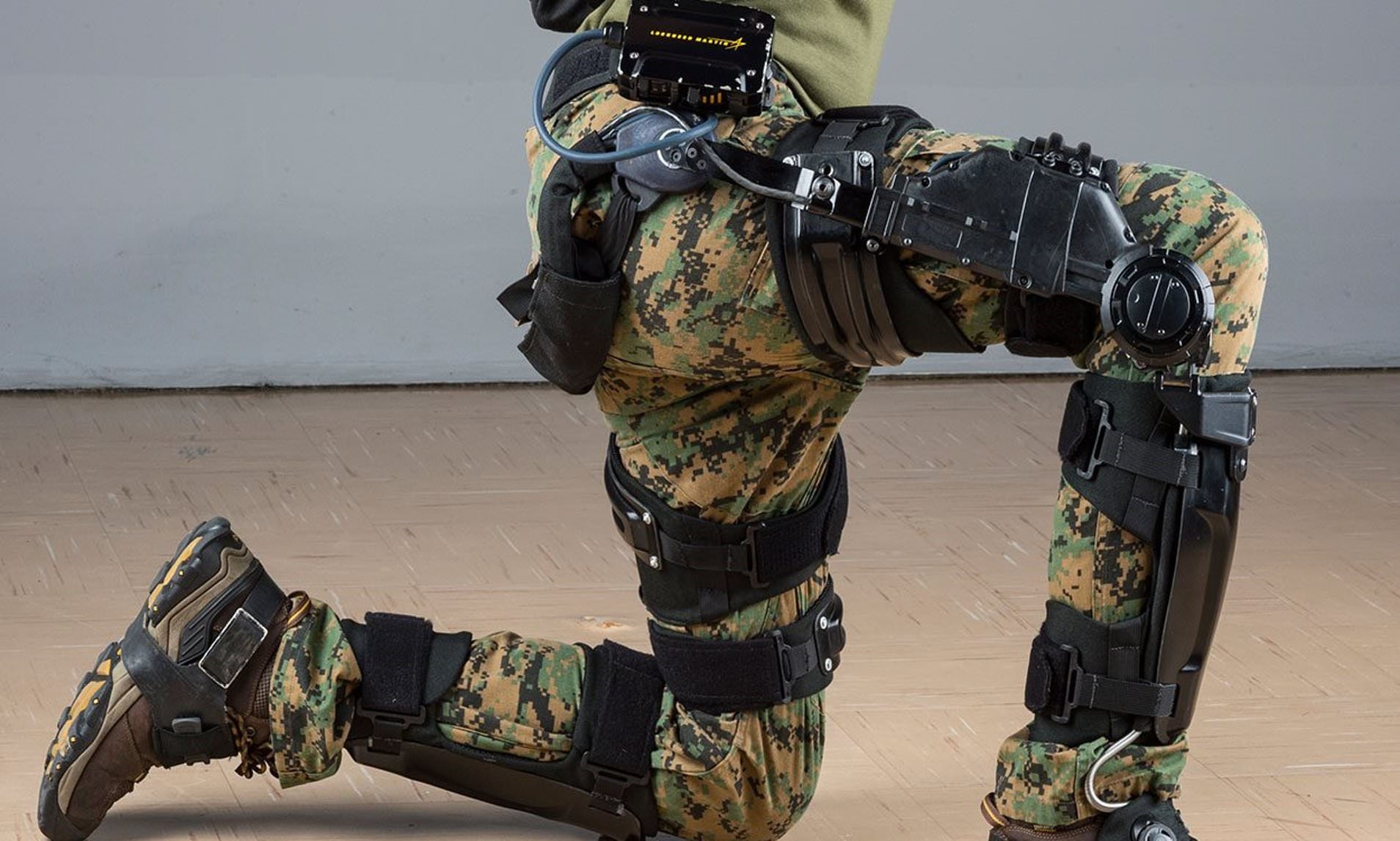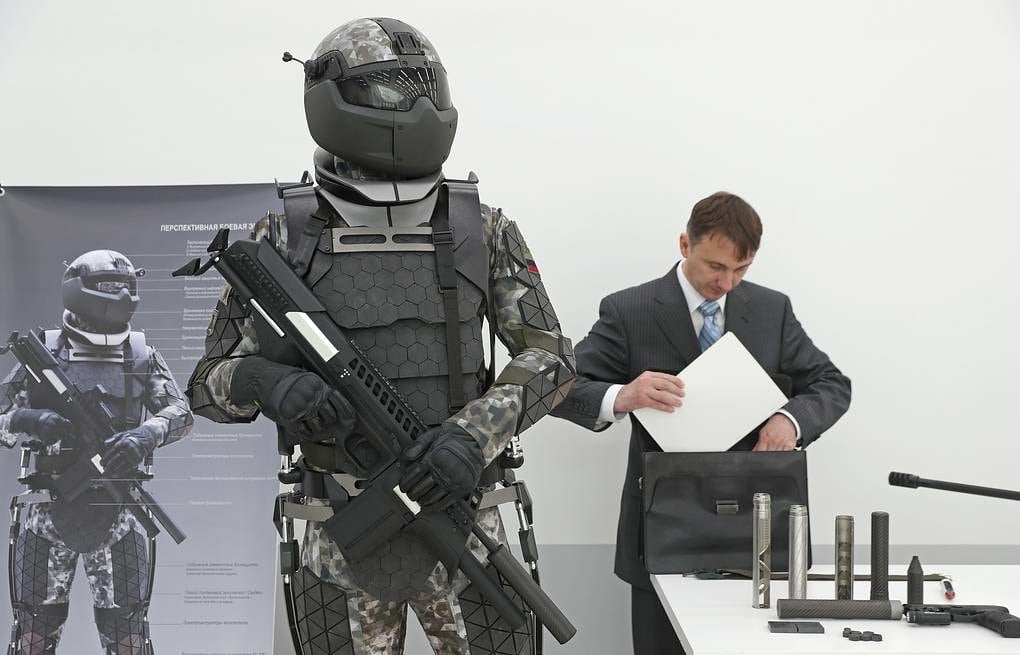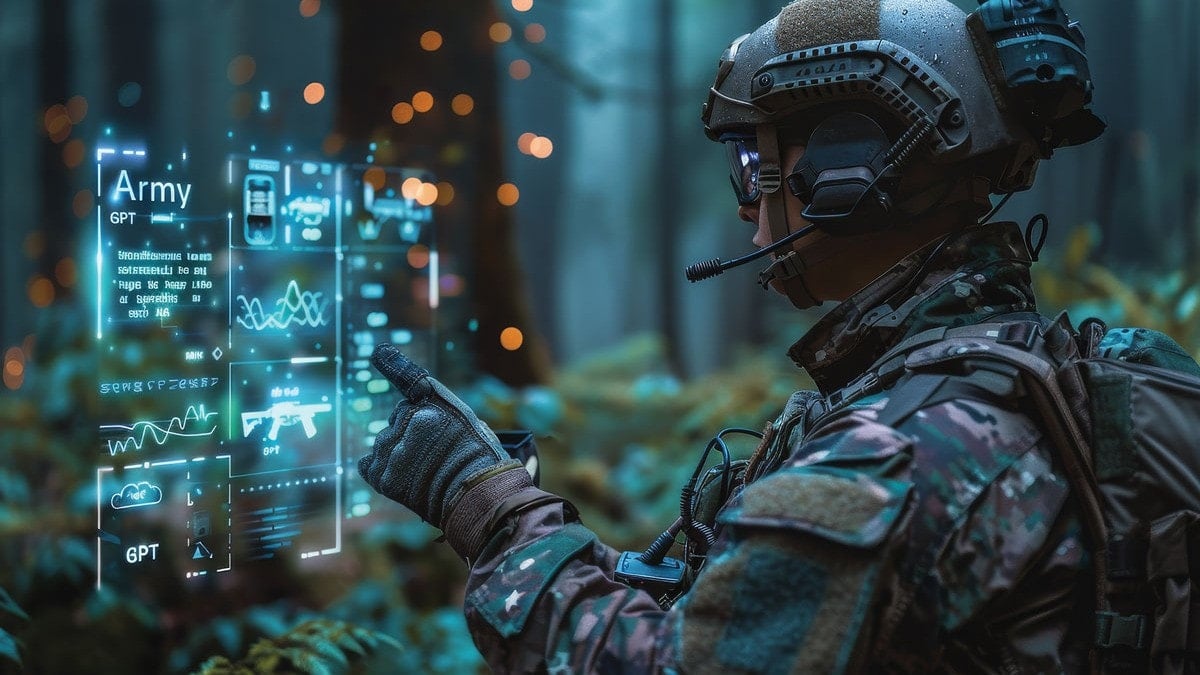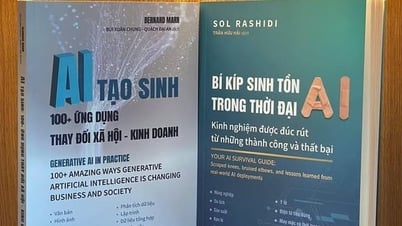From exoskeletons that aid in mobility, strength, and personal carrying capacity to artificial intelligence (AI) that controls weapons systems, the future soldier's equipment is being shaped by technological breakthroughs.
Technologies that turn soldiers into “super soldiers”
Exoskeletons or external metal support frames are becoming the focus of research in many countries. The US has successfully tested TALOS, an exoskeleton that helps soldiers lift 90kg easily, increase movement speed and reduce fatigue. China also announced the Metal Wolf project to increase bulletproof armor and integrate multi-tasking sensors for each soldier.
 |
| Exoskeleton prototype is being tested by the US Army. Photo: Defesne News |
"Exoskeletons will completely change the concept of physical strength on the battlefield. By 2035, it could become standard equipment, helping soldiers operate continuously for 48 hours without rest," said Dr. John Richardson of the US Defense Research Institute.
For every soldier, weapons are indispensable. Future personal weapons integrated with AI are a notable trend. The US IVAS project equips soldiers with augmented reality (AR) glasses, displaying battlefield maps, identifying targets and translating enemy languages in real time. Meanwhile, the Russian Army is developing Marker - an autonomous combat robot that uses AI to analyze tactics.
New materials technology, especially composites, are helping to create clothing that not only camouflages soldiers, but also provides a basic layer of protection for each soldier. Materials such as graphene, ultra-strong carbon fiber, and self-healing adhesives are revolutionizing body armor design.
The British Army has tested InvisiShield – a graphene-based armor that is only 2mm thick but can withstand 7.62mm armor-piercing bullets. Meanwhile, the US has developed Adaptive Camo – a thermal camouflage coating that helps soldiers become “invisible” to infrared cameras.
Dr. James Carter of the Massachusetts Institute of Technology (USA) emphasized: "New materials not only protect lives but also optimize mobility. A light armor will help soldiers move twice as fast, reducing the risk of casualties in combat by 30%.
Another key element of the future soldier is connectivity. They will become part of a unified command, reconnaissance and combat system. The concept of the Internet of Battlefield Things (IoBT) is becoming the backbone of modern warfare. US soldiers are equipped with Nett Warrior – a device that connects every member of the unit, sharing terrain data, enemy locations and emergency medical requests. The Chinese military is also developing SkyNet, an AI system that analyzes data from drones, satellites and ground sensors to make tactical decisions in 0.1 seconds.
 |
Prototype of the Russian Army's future soldier equipment. Photo: TASS |
The more automated the sensor system and weapons are, the more the problem arises for soldiers, which is the source of electrical energy to supply the devices they carry. Bio-battery technologies and the ability to recharge without being connected are being noticed, such as: Germany's Bio-Battery project uses bacteria to convert waste into electricity, providing continuous power to electronic devices. The US develops Wireless Charging Vest technology - armor with integrated inductors, charging weapon batteries via electromagnetic waves.
Who will rule the future battlefield?
According to the US National Defense Research Institute (RAND) Report, by 2040, 70% of combat missions will be performed by robots, UAVs (unmanned aerial vehicles) and AI systems. Soldiers will no longer be direct combat forces but will shift to remote control, data analysis and tactical decision making.
Specifically, the US Air Force is developing the Skyborg program – an AI system that controls unmanned combat aircraft, allowing human pilots to monitor multiple UAVs at the same time. China is investing heavily in combat robots such as Sharp Claw, which can automatically identify targets and fight alone.
According to the assessment of the military magazine Topwar, on the future battlefield, combat robots will replace 30% of dangerous tasks, reducing human casualties. Deep integration of AI helps the system receive, analyze and make tactical decisions for soldiers 10 times faster than today with an average reaction time of only 0.5 seconds.
Former Pentagon advisor Major General John Davis envisions a future battlefield where each soldier is a “cell” of networked warfare: “By 2035, each soldier will be a mobile command center, connected to satellite systems and unmanned vehicles to optimize combat performance.”
 |
| The future soldier is not just a simple combat element, but the "center" of receiving, processing information and making decisions on the battlefield. Photo: Topwar |
In addition to traditional kinetic and chemical weapons, focused energy or particle beam weapons such as lasers and microwaves will play an important role.
Professor David Lee of the Royal Military Academy of the UK predicts: "The future belongs to armies that know how to combine technology with human strategy. No matter how powerful AI is, the decisive factor is still the creative thinking and will of the soldier."
The military equipment revolution ushers in a new era – where technology and soldiers merge. However, success depends not only on budgets or technology, but also on the ability to train soldiers to adapt to technology while maintaining moral and human values.
"Machines can change the battlefield, but it is the human heart and mind that truly wins the battle," General Mark Milley, former Chairman of the US Joint Chiefs of Staff, emphasized.
TUAN SON (synthesis)
* Readers are invited to visit the World Military section to see related news and articles.
Source: https://baodaknong.vn/cong-nghe-dang-dinh-hinh-trang-bi-cua-nguoi-linh-tuong-lai-tren-chien-truong-253426.html




















































![[Maritime News] More than 80% of global container shipping capacity is in the hands of MSC and major shipping alliances](https://vphoto.vietnam.vn/thumb/402x226/vietnam/resource/IMAGE/2025/7/16/6b4d586c984b4cbf8c5680352b9eaeb0)













































Comment (0)